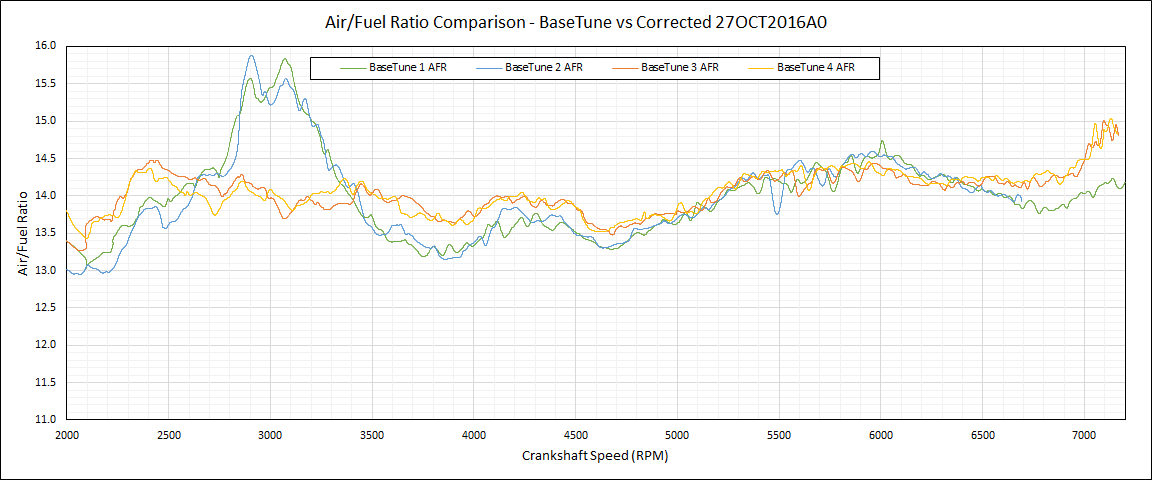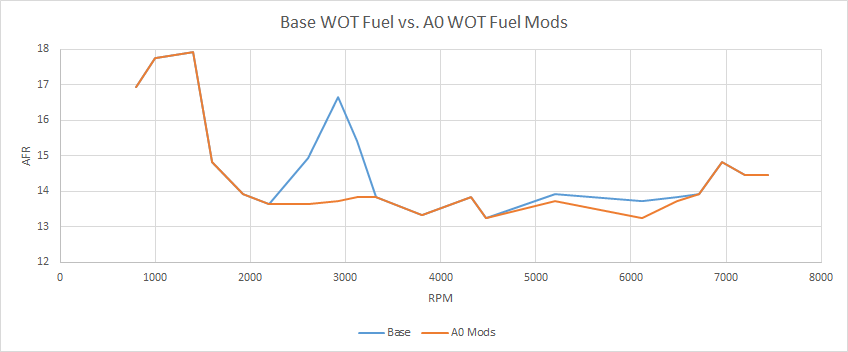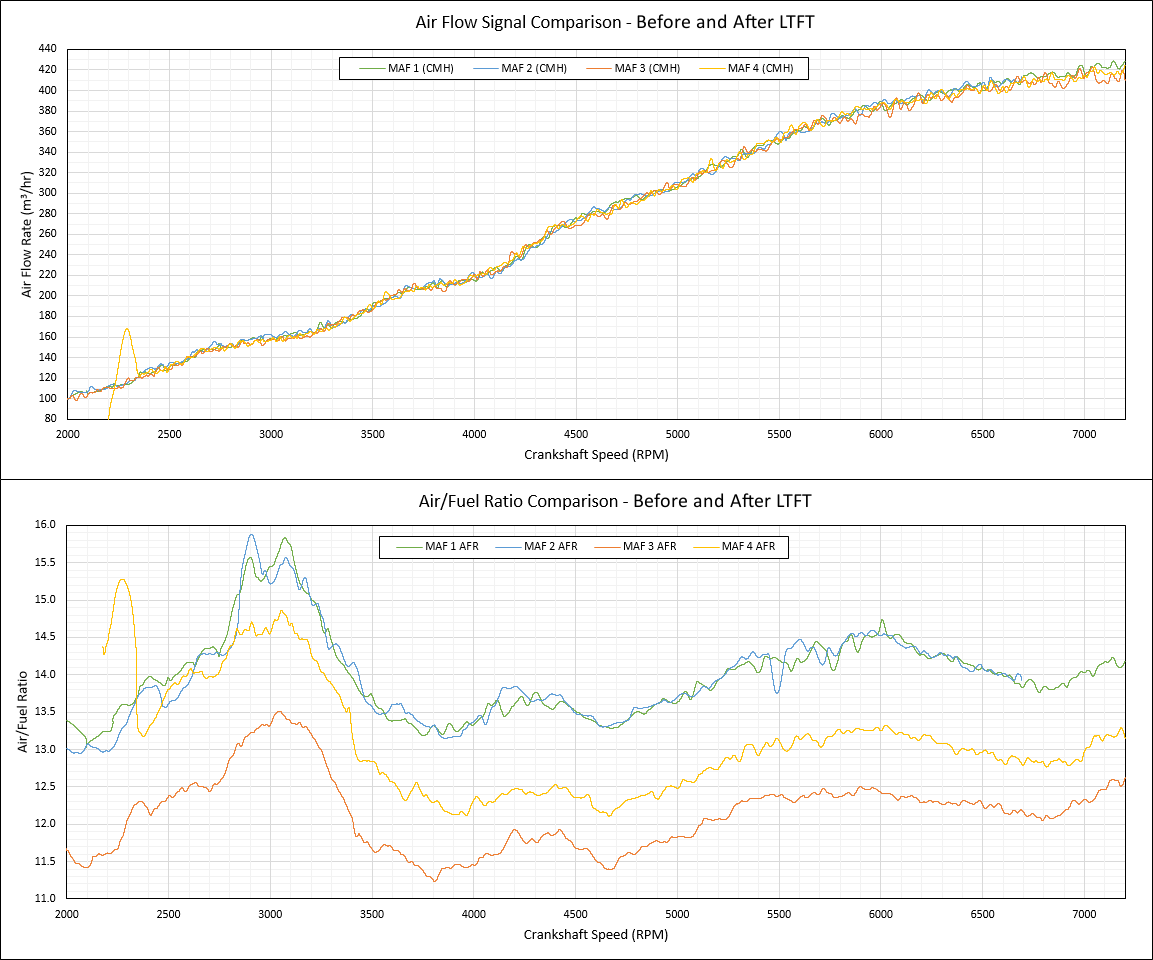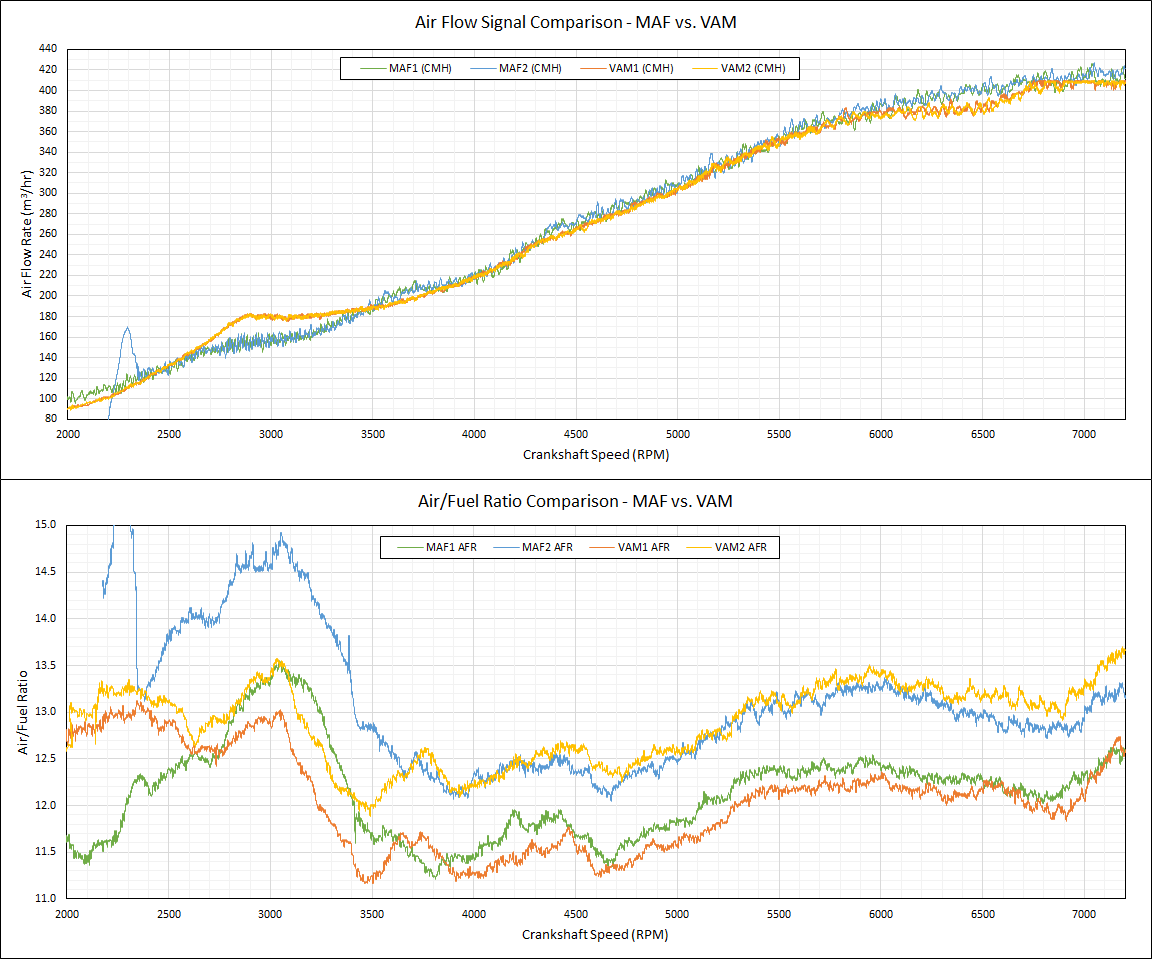I have been doing a lot of research into the stock ECU's map programming and stuff, as well as talking to SSSQuid about doing some live dyno tuning in December. For the time being, I figured enough things out to modify my WOT fuel maps and deal with the 2500-3500RPM leaning issue. Sure, enough, the maps all had a lean region in that RPM range, and I am convinced that it is precisely because the stock VAM over-reports air flow in that range at WOT thanks to intake resonance.
Here are some AFR comparisons from 2nd gear WOT pulls. The first 2 (green and blue) are with the base tune for my built engine. The second two (orange and yellow) are from today with the first round of mods I made to my WOT fuel tables. Not only are the numbers more sensible, but it has a lot more power in that RPM range. I did also make some small changes to the fueling near max 6000 to enrich things a little there too, although it doesn't look like it did all that much. It could be because my original pulls were done in the middle of summer, and today the temperature was a lot lower and the humidity a lot higher. Who knows.

Also, here is a little plot showing what all I did to the WOT fuel map. The values are converted to AFR's for ease of viewing (instead of the raw hex values from the BIN dump).

So, in a month or two I expect to have a FULL custom tune done on a dyno. This excites me, because the car is fun as hell now, and I think that there may be a fair bit of optimization in the fuel and spark tables that has yet to be done. I will definitely post up the dyno results when those are in! This also puts some stuff to bed regarding the MAF conversion...to actually have it run right, you either need a modified WOT fuel table, or a MAF converter that also takes in RPM and throttle position so as to mimic the stock sensor's non-linearities.




Leave a comment: